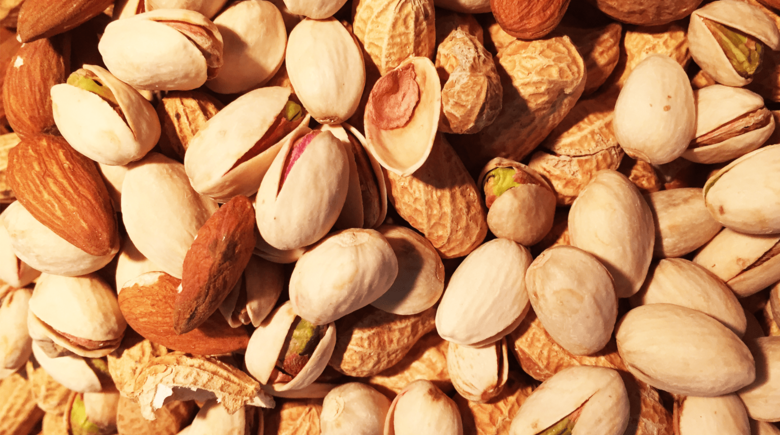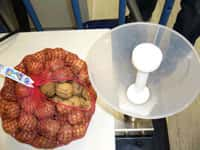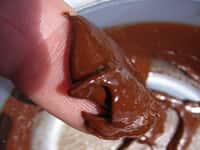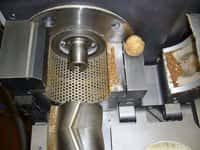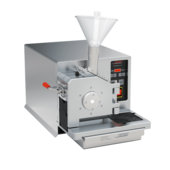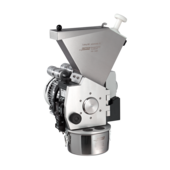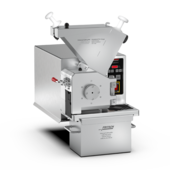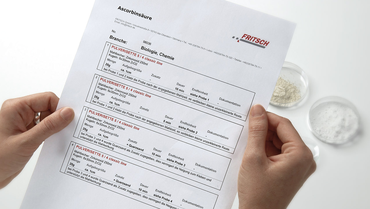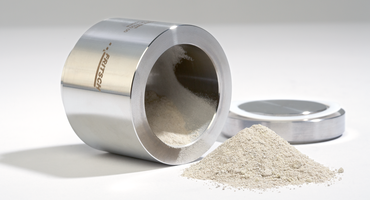Retour à l'aperçu
For quality control purposes nuts have to endure a great deal
Distributors as well as consumer have a great interest in their products meeting quality standards. For chemical analysis and quality control is a diligent sample preparation as a prerequisite for a fine analysis essential, in order to observe the predefined critical values and tolerance values. Perfectly suitable for the comminution of nuts are the FRITSCH Cutting Mills.
Consumer protection
Food inspections concentrate on verifying harmful substances like toxins, heavy metals and non-permitted pesticides.[1]. The consumers trust that top limits of harmful substances are not exceeded and therefore contaminated products not sold. Nuts are considered a problematic product in food inspections since the shell gives no clue about whether the core has the adequate quality. The inside may contain fungal spores or toxins which simply can not be perceived from the outside. With defined methods, samples may be tested for their safety. Research and development in chemical analysis made it possible to trace toxins. This makes a constant update of the list of critical substances and their maximum amounts necessary.
Hazelnut-Spread should always taste the same!
Another important aspect in the production of food is the production of a constantly identical product. Therefore must the ingredients with each use contain exactly the same characteristics. Here the manufacturer tests each new batch from the distributor for its authenticity.
For testing of the flavour, a nutritional analysis is conducted which inspects the fat and sugar composition and therefore offers information about the taste. Additional spectroscopic analyses of the comminuted sample offer the proof for the utilization in the manufacturing.
On the trail of mycotoxins
In Germany the mycotoxin maximum residue level regulation applies (MHmV) of 2nd of June 1999, which defines the admissible maximum amounts of aflatoxins B1, B2, G1, G2 and M1. In order to match the newer standards to research, in 2004 the maximum residue levels for ochratoxin A e.al. in instant coffee, roasted coffee and dried fruit, for deoxynivalenol and zearalenon in food grain, grain products like bread, and bakery products and for fumonisin B1 and B2 in corn, corn products and much more were also implemented. Throughout the EU the regulation applies (EG) no. 466/2001, which since then has been adapted and improved (up to (EG) no. 856/2005). Since in Germany the maximum residue levels are stricter still the current MHmV applies here. In the regulations are not only a number of substances and their maximum residue levels predefined, but also the analysis methods and methods of samplings set. [2] [3] Defined are these in the regulation (EG) no. 401/2006 of the Commission of 23rd February 2006 for the official inspection of the mycotoxin levels of foods. This regulation is in effect as of 1st of July 2006 and replaces the up until then regulation for aflatoxins respectively ochratoxins A respectively patulin respectively fusarium toxins applicable regulations 98/53/EG, 2002/26/EG, 2003/78/EG and 2005/38/EG. Also in the MHmV, last amended on 2nd November 2005, refers in § 4 to the corresponding EU regulation. [3] The main problematic is that mycotoxins can be distributed very differently in the sample. Is a sampling taken incorrect or is the ensuing analysis method performed incorrectly so all results are distorted.
Requirements of the sample preparation
In order to perform the full spectrum of the analysis, a representative homogenous sample is necessary. During the entire sample preparation the sample may not be subject to any type of physical or chemical influences. The affects appearing during comminution would otherwise then falsify the results of the analysis. [2] Heat for example would make any type of protein structures like micro organisms or volatile substances untraceable. Toxins would evaporate due to thermal stress. Also an extended mechanical strain may not take place, since the fats from the organic cells escape and adhere to other cell constituents in the grinding chamber.
The solution: FRITSCH Cutting Mills
The optimal air flow in the FRITSCH Cutting Mill ensures an especially high air throughput in the grinding chamber, speeds up the comminution process and protects effectively against clogging of the sieve. An additional plus of the FRITSCH Cutting Mill is the unique cutting chamber geometry: The cutting chamber is designed with minimum dead space and progressive cutting geometry between rotor and fixed knives in a manner so the sample is automatically transported and comminuted finer and finer to the desired final fineness. The sample can not collect anywhere which a glance into the opened grinding chamber shows. The result: very high throughput, small thermal load due to marginal retention period of the sample in the grinding chamber and minimised cleaning effort!
Practical example: Comminution of Nuts – Generating representative samples
Detailed sample preparation of nuts according to regulation (EG) No 401/2006 with tips, approaches and photos of the individual steps.
-
Download the FRITSCH-report as PDF-file
-
Detailed grinding reports
Retour à l'aperçu

